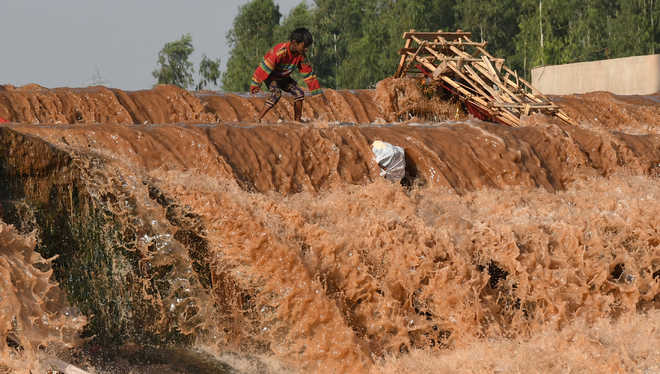Why rally for rivers needs more ‘cusecs candidate’
The rivers of this nation are dying and need immediate public support and government commitment to save them. Sadhguru Jaggi Vasudev, who was in the city to seek public support for his “Rally for Rivers” campaign, said this while emphasizing that everyone who consumed water must contribute towards the revival of rivers.
Dwelling on the importance of the preservation and rejuvenation of Indian rivers, the Sadhguru expressed concern that even the perennial streams were turning into seasonal ones and wanted the rivers to be treated as national treasure.
The concerns of the Sadhguru are not out of place. Water is closely related to the development of human civilization, which originated mostly in river valleys. Almost all major cities of the world are located on the banks of rivers or sea-shores. In India, rivers have a close relationship with the lives of the people. The names of five rivers are chanted during religious rituals: “Ganga cha, Yamuna Cha-Iva Godavari Saraswati; Narmada, Sindhu, Kaveri Jale, Asmin Samnidhim Kuru” (O holy rivers Ganga and Yamuna and also Godavari, Saraswati; Narmada, Sindhu and Kaveri, please be present in the water near me).
A dip on sacred occasions at places like the Sangam in Allahabad is regarded as of great significance. “Ganga Snan” is a term every Indian is familiar with and industrial centres, tourist spots, even cremation grounds are all located on the river banks.
But the rivers have been getting polluted. Discharge of industrial effluents and civic waste are among the factors along with depletion of green cover that have affected the rivers. The state of the holy Kali Bein in Punjab and its revival through the efforts of Sant Balbir Singh Seechewal is lore. At Budge-Budge in Kolkata where I once happened to visit to see the Komagata Maru memorial, oil discharge was clearly visible in the Hooghly waters and the colour was far different than what one sees at Haridwar and Rishikesh. Similarly, in Delhi, one does not have to be an expert to see the polluted state of the Yamuna.
So, the concern over saving the rivers is justified. One suggestion to save the rivers has been to inter-link them. The suggestion itself is not new.
In fact, Dr KL Rao, a renowned engineer who designed the Nagarjuna Sagar dam, the world’s longest masonry dam on the river Krishna and also served as Union Minister for Irrigation and Power, wrote in the preface of “India’s Water Wealth”, “It is a folly to presume that India has an inexhaustible supply of water resources, because most water of major rivers is not available for use. Similarly, the water of many minor streams cannot be fully utilized. Therefore, an intensive study is needed to develop the water resources in a planned and balanced way.”
The maximum use to which river water is put to use is agriculture, of which irrigation is the main component, accounting for nearly 80 per cent of demand. In the form of river streams, the total water available in India is 1,780 lakh hectare metre but the annual per capita water availability has come down from 5,177 cubic metres in 1951 to 1,545 cubic metres in 2011.
Dr KL Rao, who wrote his memoir “Cusecs candidate”, proposed the plan for a national water grid in 1972. The plan divided the country into four regions. A Ganga-Cauvery canal scheme was proposed. Its cost was estimated at Rs 12,500 crore, which escalated to Rs 30,000 crore.
Then came a plan by Captain DJ Dastur, a retired pilot, known as Mala Canal Project. It proposed storage of water of perennial rivers flowing from the Himalayas and their equitable distribution throughout the country. Captain Dastur estimated the cost of the project at Rs 24,100 crore. It was also scrapped.
But efforts continued to be made. In 1990, a National Water Board was constituted. Later, the National Water Development Tribunal started work for proper utilization of river water through internal transfer in river basins.
But the very nature of the proposal makes it an issue kosher for the political parties who exploit it to nurture their constituencies. The Sutlej-Yamuna link canal and the posturing by states like Punjab and Haryana is an example. The dispute over Cauvery river water between Tamil Nadu and Karnataka is well-known.
The planned development of river valleys sought to make judicious use of river water but unregulated development is threatening to choke the rivers. The poet Kalidasa in Raghuvansham says about the rivers, “These water-filled streams fill the earth with the power of procreation and energy. It is these streams flowing on the landmass which act as the blood-pumping arteries in the body.”
Let’s hope good sense and community efforts keep these arteries flowing.










